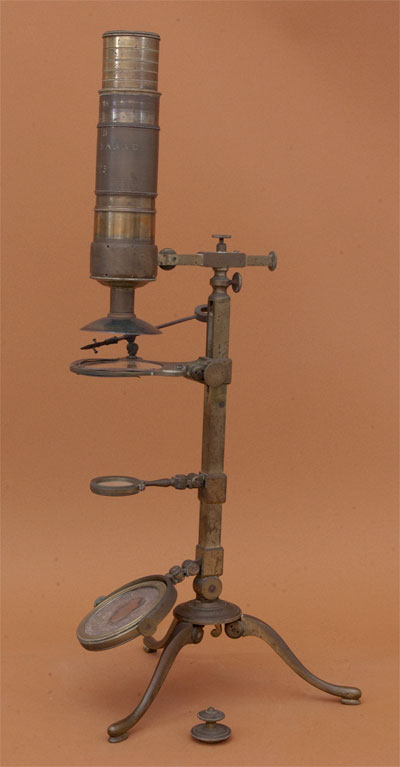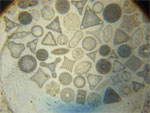 |
|||||
 |
 |
||||
 |
|||||
 |
 |
||||
Dellebarre Universal Microscope (No. 35) |
||||||||
 |
Made: 1793 Made by: Louis Françoise Dellebarre Made in: Holland |
|||||||
 |
||||||||
|
Dellebarre
1793 |
||||||||
 |
||||||||
|
Imaging
|
||||||||
|
Louis-François Dellebarre (1726–1805) was born in Paris and worked for many years in Holland (mainly Delft, but also Leyden and the Hague). The style exemplified by this instrument in the Golub Collection was developed in 1771 and continued into the early 19th Century. Dellebarre's instruments were attractive and distinctive in design, but had relatively poor optics. Nevertheless, his microscopes were very popular toward the end of the 18th century, where they sold for about 360 francs. Goethe is reported to have owned one of these microscopes. Unfortunately, Dellebarre was unable to support himself in his later years and he died in Paris with heavy debts. According to Clay and Court (1932*) the 1777 French Academy proclaimed the Dellebarre design as possessing several new improvements over existing microscopes of the time, and they recommended it highly. However, in 1824 when Fresnel** compared to other microscopes of the early 1800s, the Dellebarre had the lowest "sharpness of image". Part of this problem is undoubtedly the poor optical quality of the individual eyepiece lenses. This specific instrument is signed on the barrel and dated "1793". Typical of the Dellebarre design is the five-lens eyepiece, used to change magnification. The objective has a single lens and small aperture. The microscope is all brass, with folding tripod legs and a square support pillar, which is hinged at the base to allow a more comfortable viewing position. The microscope body can be swung away from the support pillar and pivoted to the "aquatic" position (horizontal). A condensing lens for increased light to the specimen is mounted on the support between the mirror and the stage. Focusing is by rack and pinion. A Lieberkuhn mirror is attached to the nosepiece to reflect light onto the specimen. This microscope has only one accessory, a specimen forceps. The microscope is 52cm tall. This microscope was instrument No. 67 in the original Nachet Collection of Paris. *This microscope is identical to one described by Clay and Court (1932, The History of the Microscope, Fig 145, p206). **Fresnel, 1824. Rapporte sur le Microscope Achromatic de Selligue. Featured 06/06; 08/10 |
||||||||